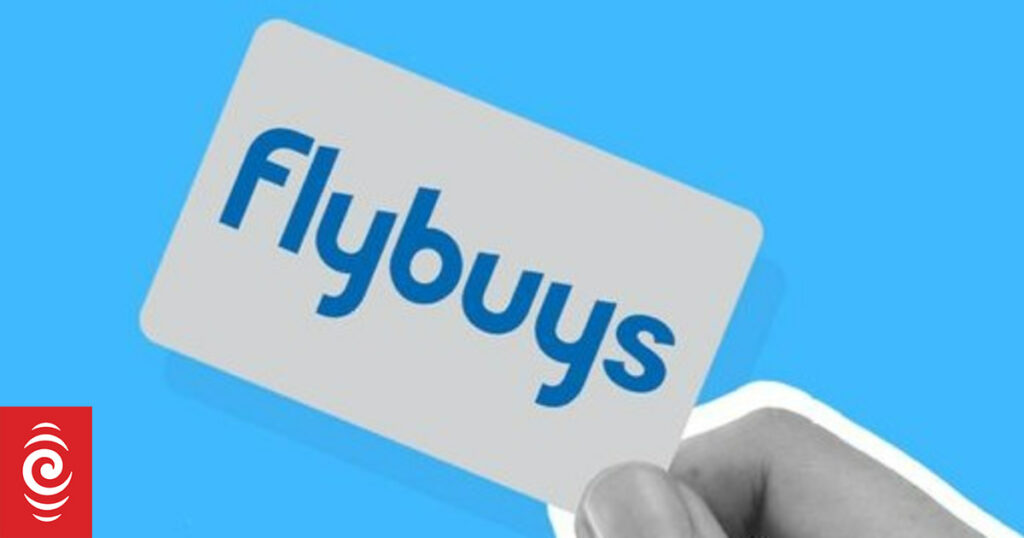Flybuys might have tried to shake off its image as the “toaster programme” when it relaunched four years ago, but ultimately could not win a battle with a growing number of programmes seen as easier, faster and more rewarding by shoppers, retail experts say.
The Flybuys loyalty scheme will close on 31 October.
Photo: Facebook / Flybuys
It was announced this week that the programme, which has been in existence since 1996, will close on 31 October.
It has about 1.8 million active members – a sharp decline from the 2.7m it was reported as having in 2020.
Back then, media reported chief executive Lizzy Ryley saying the plan was to give customers more freedom to choose how they claimed rewards.
She said younger people had given feedback that Flybuys was seen as “the toaster programme” that their parents used. There were also concerned that it took a long time to claim a reward if they did not spend a lot.
But retail commentators said many of those problems persisted after the relaunch, particularly as other programmes focused on simplifying what they offered and tailoring rewards.
In 2020, New World – one of the key places Flybuys are collected – gave customers the option of collecting New World dollars on their Clubcards instead of Flybuys.
It was part of a wider move towards retailers offering their own in-house schemes, rather than opting into third-party plans like Flybuys.
Advances in technology that had made it easier for retailers to set up “highly tailored, proprietary loyalty programmes” were one of the factors Ryley mentioned when she revealed the decision to close. “The Flybuys model of a services and retailer alliance has run its course.”
Flybuys would share data with scheme participants for a fee, but it is now much easier for retailers to set up their own systems to collect the data they need.
Marketing expert Bodo Lang, of Massey University, said Flybuys had launched at a time when marketers realised it was more cost effective to retain customers than try to find new ones.
“Flybuys was very innovative because it was essentially a loyalty alliance spanning many products and retailers. However, the demise of Fly Buys has been on the cards for a while. The survival of a loyalty programme is determined by how attractive it is to both businesses and to consumers. And of course these two aspects are linked.”
He said cracks started to appear just under 10 years ago when retailers such as Mitre 10 left the scheme, which reduced its value for customers. Mitre 10 now promotes its alliances with Air New Zealand’s Airpoints.
“At the same time other loyalty programmes started up with arguably more compelling value propositions for consumers. On top of that, Flybuys was difficult to understand for consumers because of different earning and redemption rates at participating businesses. The attractiveness of rewards was also sometimes a weak point of the system.
“While the programme still had many members, I am certain that their engagement with the loyalty scheme was at an all time low.”
Chris Wilkinson, of First Retail Group, said there were a lot of loyalty programmes to choose from, and all businesses were focused on ways they could preserve their margin as much as possible.
“These incentive programmes are costly to operate. We’ve seen big changes have gone on recently with the likes of [Woolworths’] Everyday Rewards. They are hugely expensive to run and for businesses to integrate with them is also quite expensive.”
He said every time a business updated its point of sale or stock management systems, it had to update its interface with the loyalty programme.
“There is a plethora of these programmes now but the benefit to business is less certain because consumers are increasingly led by price, not goodwill.”
Associate professor Laszlo Sajtos, from the University of Auckland, said another shift was that people were increasingly using digital wallets on their phones rather than physical cards.
“Ten years ago when I looked at my wallet I’m pretty sure I had 10 or 12 of these loyalty cards in there, even now I’m given some of these cards but who cares? Ten years ago you carried these around and they were very important cards you wanted to use, you were swiping them day in and day out but this is not happening any more.”
He said the visibility of the programmes was diminishing and customers were more focused on instantaneous rewards.
“That’s not what Flybuys is and that’s a really important thing. People want to go to a shop and accumulate points there and then and then redeem them instantly.
“Loyalty programmes are not enticing enough anymore – there are too many. I think Flybuys hit a dead end and nobody was interested in this anymore. If you ask customers what is the value of a point, how do they know?”
New World would not disclose what proportion of its Clubcard members were still accumulating Flybuys.
Foodstuffs group general manager of marketing and media Dominic Quin said the Clubcard scheme had more than 1.7m active members.
New World dollars would remain available when Flybuys closed, he said.
“This means New World Clubcard members who currently earn Flybuys when they shop with us will automatically start to earn New World Dollars. Flybuys earning Clubcard members can choose to change their reward currency to New World Dollars at any time via the Flybuys website.”
IAG, which operates State, another Flybuys partner, will acquire some of Flybuys operator Loyalty New Zealand’s assets.
>>> Read full article>>>
Copyright for syndicated content belongs to the linked Source : RNZ – https://www.rnz.co.nz/news/national/518338/what-went-wrong-for-flybuys
